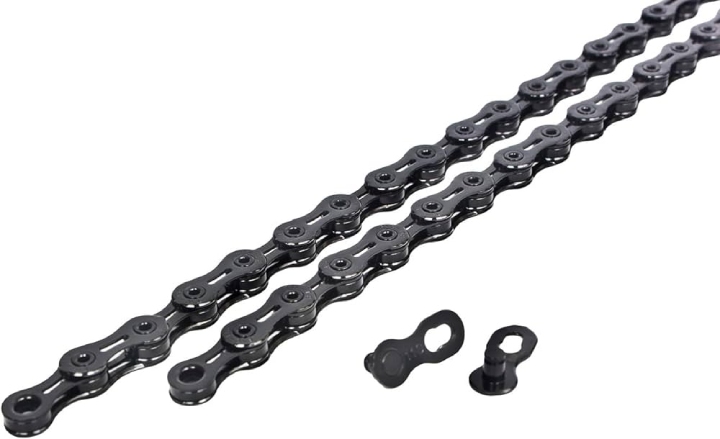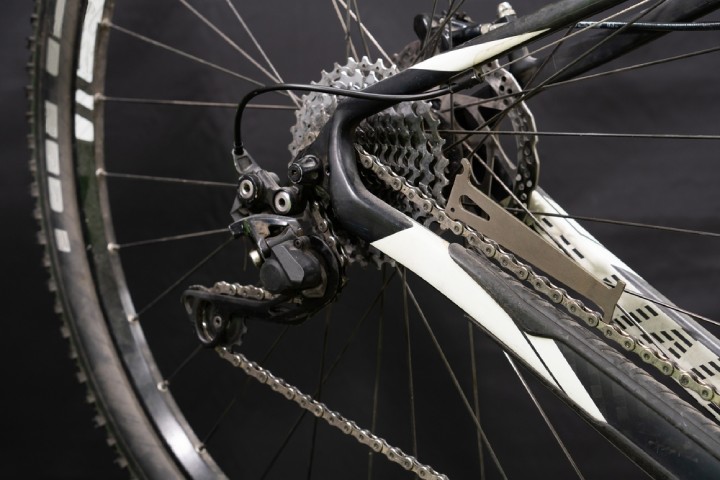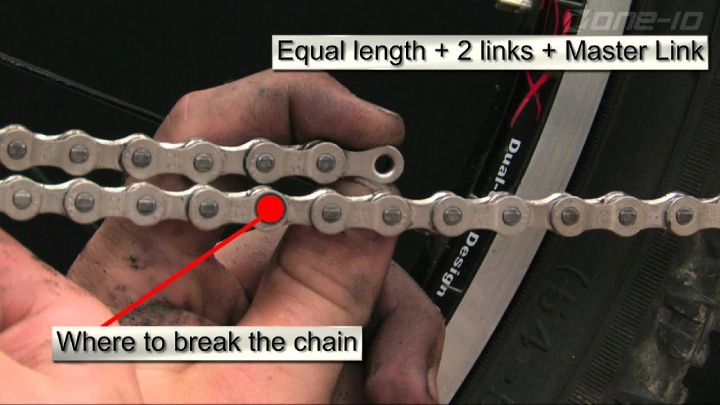Just like the other components of your bike, you need to maintain and repair the chain properly so it keeps running smoothly. One critical component of the chain is the master link, also known as a quick link or a power link.
You will have to search for it in different situations, such as when cleaning and lubing the chain, or when replacing the chain itself.
In this blog, we will guide you on how to find the master link on a bicycle chain easily.
Types of Bike Chains
Before we go further, let’s have a look at the different types of chains. This will help make the process much simpler for you.
1. Standard Roller Chain
This is the most widely used type of chain for bicycles. Strong and durable, they are a great choice for heavy-duty use. However, it can be difficult to clean and lubricate standard roller chains, which is why you won’t see them in high performance bikes.
2. Silent/Whisper Chain
These chains were designed specifically to reduce noise and now are being used in mountain bikes mainly.
3. Hollow Pin Chain
They are similar to standard roller chains but use hollow pins instead of solid ones. They are lightweight and ensure peak performance but cost more.
How do bike chains work
A bike chain is made of many different links in a pattern in the length of the chain. Each link has two side plates that are connected using pins or rivets. These links fit into the sprocket slot. On the outer link, there’s a roller as well.
When you ride your bike, the chain wraps along the sprockets and moves, generating the force needed to move the bike forward. The chain rub links grind against the sprocket teeth as you pedal and make it rotate. This causes the crank to turn as well, which then spins the wheels.
The chain also functions to provide power to the rear wheel. This is why it’s important to make sure the chain is not loose or else it may slip off from the sprockets. The chain is kept tight because of the derailleur, which is a part of the bike that transitions the chain between the sprockets.
Bike chain master link
The link that connects the two ends of a chain is known as the master link. If you don’t know which one the master link is, you can’t add or remove links when needed. You won’t be able to adjust the chain or fix it either. That’s why it’s important to know how to find the master link on a bicycle chain.
How to Find the Master Link on a Bicycle Chain?
The master link is usually bigger than the rest of the links and may have a different color too. Here are a few steps to locate the master link on the bike chain
Step 1: Set up your bike stand
Set up your bike on its stand first. Once the bike is in the correct position, you can work with the chain. This will give you a good view of the bike chain links.
If you don’t have access to a stand, you can turn the bike upside down for a good look. But be careful because resting your bike on its handlebars and saddle may damage it.
Step 2: Place your bike on the drivetrain side
After you set your bike in the correct position, you have to stand on the side with the drivetrain because that is the perfect position to inspect the chain. It also gets you access to the master link easily.
Step 3: Examine the links
Finding the master link on a bicycle chain is not as simple as setting up your bicycle on a stand and inspecting the chain. The best way to find the master link is by turning the pedals slowly, which will rotate the chain and allow you to check each link.
When the links start moving, you will notice that one link seems different. As said before, it could have a darker or lighter color than the other links. It could also be thicker or wider than others.
You may need to measure every link of the chain in order to find out which one is bigger. The gap connecting the link plates to each other will also help with your search. If the gap has a ⅛ inch width you will be able to locate the master rivet.
How can you open the master link on a bike chain?
It is also important for you to know how to find the master link. This will help you when you need to remove or add links to the chain. If the chain is too long or too short, it can impact your cycling experience and harm your bike.
You can easily remove or add links in your chain after you open the master link. Once you locate it, push one of the pins out using a chain tool. This is an easy process and will work with minimal push. Once the pins are removed, you can open the master link.
Here os how to add or remove links to the bicycle chain:
- Thread the chain by taking the links through the derailleur and sprockets
- Add the master link to connect both ends again
Bike Chain Maintenance Tips
Apart from adding and removing links to the chain, remember that taking proper care of your chain is also important. Here are some easy ways to maintain your chain-
-
Clean the chain regularly
Dirty chains get damaged faster and cause you to replace them with a new one. You need to clean your chain regularly using a degreaser. Make sure it is dry before you lube it again.
-
Lubricate the chain regularly
You can make your chain long-lasting and run smoothly by lubricating it regularly. Use a lubricant only made for bicycles.
-
Replace the chain when you need it
If your chain or any other link is damaged, you need to replace it as soon as you can. Damaged links can harm the other parts and components of the bicycle such as the drivetrain and the gears.
If you want to remove your chain’s master link using pliers or by hand, you can do that but we recommend using tools. Remember the master link is the thickest and may have a different color. It will also detach from your bicycle with ease.
FAQs
Q. Is there a master link on every bike chain?
Ans. No, all bike chains don’t have a master link. They are usually found on BMX bikes, single speed or three-speed town bikes with internal gears. There is less room for the extra wide master link on a bicycle that has more sprockets on its rear cassette because of the narrow chain.
Q. What size is a bike chain master link?
Ans. Bicycle chains come in two different sizes. The ⅛ inch chain is for the single-speed type without a derailleur. The 3/16 inch chain is designed for geared bicycles with rear derailleur.
There are master links for different speeds, ranging from 6/7/8/9/10 and 11 speed. Remember to count how many cogs you have in the rear cassette when choosing a bike chain masterlink.
Q. Can a bike chain have two master links?
Ans. Yes, a bike chain with more than one master link shouldn’t have any problems.
Q. How do I know what size chain link I have?
Ans. Most roller chains have their size stamped into the side plates. You can see stamps like “40”. C2080H or 10B. Old chains might need to be cleaned if you want to see the size stamp.
Q. How frequently should I clean my bike chain?
Ans. That depends on how frequently you use your bike and what kind of environment you ride in. If you live in a dry environment with clean streets, you may have to clean your chain after every hundred miles.
If you ride your bicycle in a wet or muddy climate, you need to clean your chain often. A good idea is to clean your bicycle chain after 50 to 100 miles. Maintaining a clean bicycle chain keeps your drivetrain smooth and prevents damage to the chain from dirt and grime.












